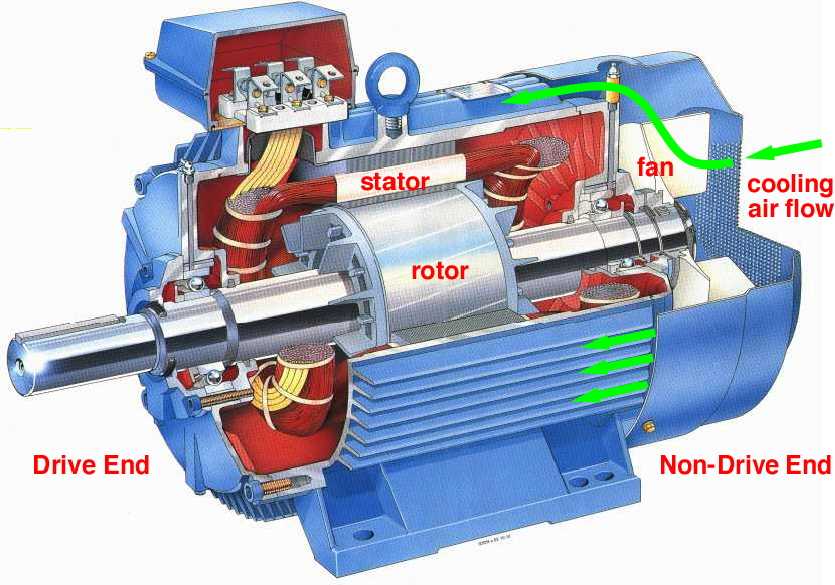
Three-phase asynchronous motors can be considered among the most reliable electrical machines: they carry out their function for many years with reduced maintenance and adapt themselves to different performances according to the requirements of both productions as well as service applications.
As already said, these motors find their application in the most different industrial sectors, such as food, chemical, metallurgical industries, paper factories or water treatment and extractive systems. The applications concern the equipment with machine components running at fixed or variable speed such as for example lifting systems as lifts or good hoists, transporting systems as conveyors, ventilation and air conditioning installations, without forgetting the commonest use with pumps and compressors.
From the above considerations it is easily deduced how three-phase asynchronous motors can be considered the most widespread electric machine for industrial applications (the power consumption of electrical motors is about 75% of the total consumption in the industrial field). Considering this datum it is possible to understand how a reduction in power consumptions can be important for both the business management (the cost of a motor in its whole life is due to power consumption for about 98% and to purchase and maintenance costs for the remaining 2%) as well as for the improvement of the power efficiency in general; for example, such reduction can be obtained by using variable-speed drives with inverters or by implementing power factor correction to get a cosϕ suitable to avoid incurring fines or, even more directly, by using the high-efficiency motors, identified by the code “EFF1”, which have particularly advanced constructional characteristics and materials, allowing to reduce energy consumption up to 20%.
 |
| Click here to begin download |
This Technical Paper (the seventh volume of the series of Technical Papers issued by ABB SACE) can be divided into five parts; after a survey of the motor structure, the main prescriptions of the Standards about coordination are considered. Then general information about the main starting typologies is offered, giving in the following part an overview of the products manufactured by ABB for motor starting, with a reading example of ABB official coordination tables. The last part is constituted by an analysis of some of the most important ratings of motors.
Five annexes complete the document with:
· a hint to the theory of asynchronous motors with the purpose of giving the basic elements to understand their operating principle
· an example for the calculation in first approximation of the starting time as a function of the characteristics of the motor and of the load
· some considerations about motor running in case of “phase loss”
· a thorough analysis of the concept of “duty type” making reference to the Standard prescriptions
· a short account of motor coordination according to the prescriptions of the UL Standards.



No comments:
Post a Comment